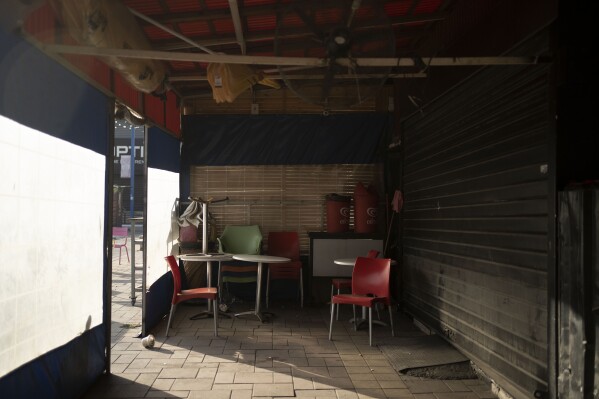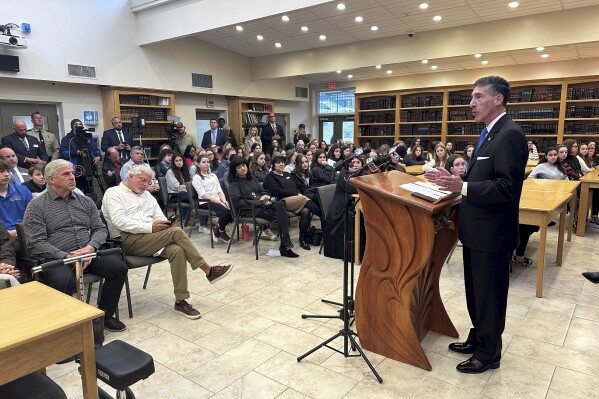Watchdog group says attack that killed videographer ‘explicitly targeted’ Lebanon journalists
BEIRUT (AP) — A watchdog group advocating for press freedom said that the strikes that hit a group of journalists in southern Lebanon earlier this month, killing one, were targeted rather than accidental and that the journalists were clearly identified as press.
Reporters Without Borders, or RSF, published preliminary conclusions Sunday in an ongoing investigation, based on video evidence and witness testimonies, into two strikes that killed Reuters videographer Issam Abdallah and wounded six journalists from Reuters, AFP and Al Jazeera as they were covering clashes on the southern Lebanese border on Oct. 13.
The first strike killed Abdallah, and the second hit a vehicle belonging to an Al Jazeera team, injuring journalists standing next to it. Both came from the direction of the Israeli border, the report said, but it did not explicitly name Israel as being responsible.
“What we can prove with facts, with evidence for the moment, is that the location where the journalists were standing was explicitly targeted...and they were clearly identifiable as journalists,” the head of RSF’s Middle East desk, Jonathan Dagher, told The Associated Press Monday. “It shows that the killing of Issam Abdallah was not an accident.”
 UN agency in Gaza says urgent cease-fire is `matter of life and death’ for millions of Palestinians
UN agency in Gaza says urgent cease-fire is `matter of life and death’ for millions of Palestinians
 Israel’s economy recovered from previous wars with Hamas, but this one might go longer, hit harder
Israel’s economy recovered from previous wars with Hamas, but this one might go longer, hit harder
 Tennessee governor, congressman discuss safety on visit to Jewish school that foiled armed intrusion
Tennessee governor, congressman discuss safety on visit to Jewish school that foiled armed intrusion
Dagher said there is not enough evidence at this stage to say the group was targeted specifically because they were journalists.
However, the report noted that the journalists wore helmets and vests marked “press,” as was the vehicle, and cited the surviving journalists as saying that they had been standing in clear view for an hour and saw an Israeli Apache helicopter flying over them before the strikes.
Carmen Joukhadar, an Al Jazeera correspondent who was wounded that day and suffered shrapnel wounds in her arms and legs, told the AP the journalists had positioned themselves some 3 kilometers (2 miles) away from the clashes.
Regular skirmishes have flared up between Israeli forces and armed groups in Lebanon since the deadly Oct. 7 attack by the militant Palestinian group Hamas on southern Israel that sparked a war in the blockaded Gaza Strip.
“Everything was on the other hill, nothing next to us,” Joukhadar said. “If there was shelling next to us, we would have left immediately.”
The Lebanese army accused Israel of attacking the group of journalists.
Israeli officials have said that they do not deliberately target journalists.
Reuters spokesperson Heather Carpenter said that the news organization is reviewing the RSF report and called for “Israeli authorities to conduct a swift, thorough and transparent probe into what happened.”
The Israeli military has said the incident is under review. When asked to comment on the RSF report, the military referred back to an Oct. 15 statement. In the statement, it said that Israeli forces responded with tank and artillery fire to an anti-tank missile fired by Hezbollah across the border that evening and a “suspected a terrorist infiltration into Israeli territory” and later received a report that journalists had been injured.
—
Associated Press writers Julia Frankel and Josef Federman contributed from Jerusalem.
Disclaimer: The copyright of this article belongs to the original author. Reposting this article is solely for the purpose of information dissemination and does not constitute any investment advice. If there is any infringement, please contact us immediately. We will make corrections or deletions as necessary. Thank you.







